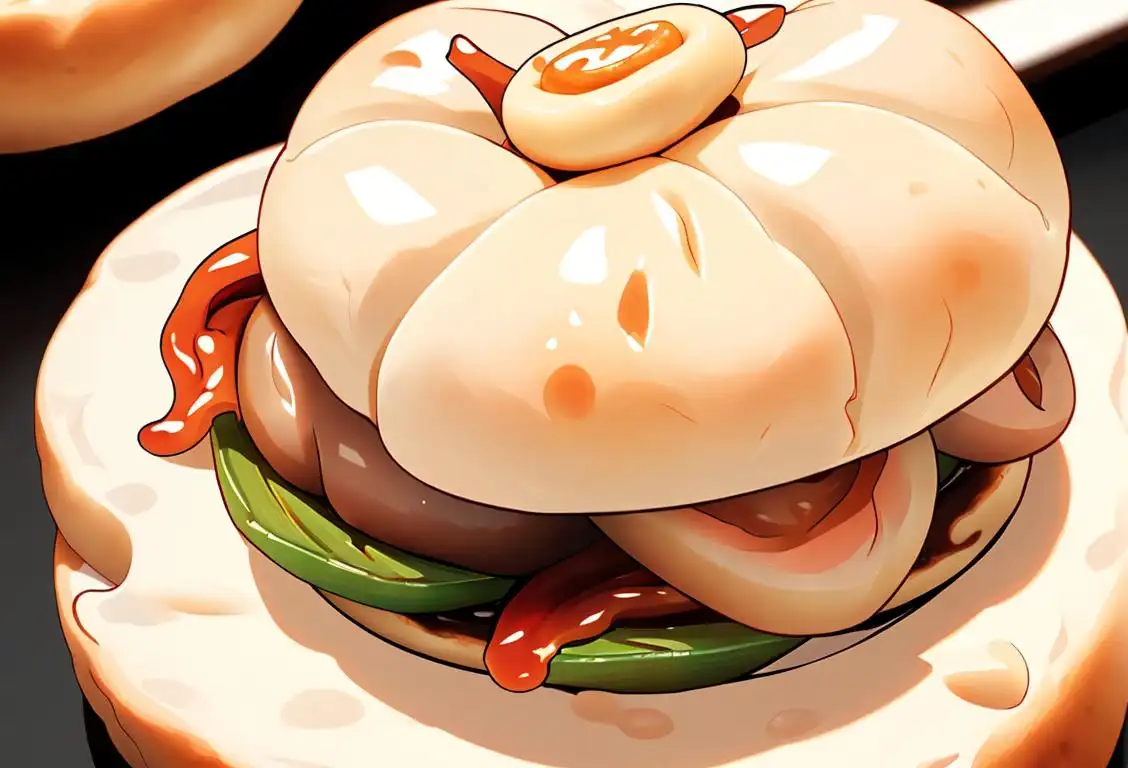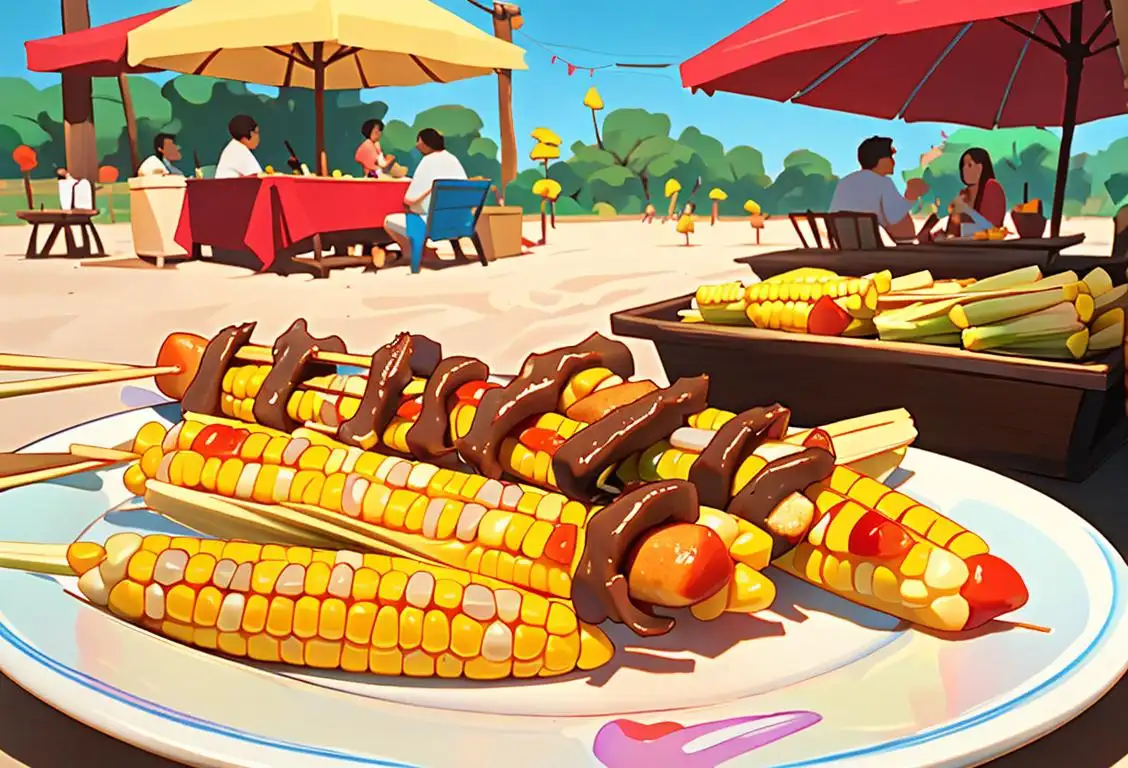National Bao Day

Welcome to the exciting and delectable world of National Bao Day! Get ready to sink your teeth into this article as we explore the rich history and mouthwatering wonders of these delightful Asian dumplings.
When is Bao Day?
It's national bao day on the 22nd August.
A Brief History of National Bao Day
Do you know what makes a day even better? Celebrating it with food! And that's exactly the idea behind National Bao Day. This special day is dedicated to the beloved bao, a type of filled bun that originates from China. Bao, also known as baozi or steamed buns, have a long and tasty history that dates back over a thousand years.
The exact origin of bao is a bit mysterious, but legend has it that they were created by a Chinese chef named Huang He in the third century. Huang He was known for concocting unique and delicious dishes, and one day, while experimenting in the kitchen, he came up with the idea of stuffing steamed dough with various fillings. The result was the bao we know and love today.
Initially, bao were enjoyed exclusively by emperors and the upper class. However, as word spread about these heavenly creations, they became popular across all social classes. Today, bao can be found in numerous variations throughout China and have even gained international popularity.
The Joy of Bao
Bao are not just your average dumplings. These little bundles of joy come in many shapes, sizes, and flavors. From savory to sweet, there's a bao for every craving!
The most common type of bao is the char siu bao, which features a fluffy white bun filled with succulent barbecued pork. Another popular variation is the xiao long bao, a delicate dumpling filled with soup and meat. And let's not forget about the sweet bao, like the delightful custard-filled nai huang bao.
But bao isn't just about the fillings. The art of making bao requires skill and precision. The dough must be perfectly steamed to achieve the right balance of softness and chewiness. And the fillings need to be flavorful and well-seasoned. It's no wonder that bao-making has become an art form that is passed down through generations.
How to Celebrate National Bao Day
Now that you know all about the history and joy of bao, it's time to celebrate! Here are a few ideas to make the most of National Bao Day:
- Visit a local Asian bakery or restaurant and indulge in a variety of bao.
- Organize a bao-making party with friends or family. Get creative with different fillings and shapes!
- Challenge yourself to try making your own bao at home. It might take some practice, but the results will be oh-so-rewarding.
- Share your love for bao on social media using the hashtag #NationalBaoDay. Spread the bao love!
Did You Know?
Did you know that the largest bao ever made weighed a whopping 1,374 pounds? It was created in 2015 in Malaysia and broke the previous record held by China. Now that's a bao fit for a giant appetite!
History behind the term 'Bao'
2700 BC
Ancient Origins
The term 'bao' traces its origins back to ancient China, around 2700 BC. During this time, a type of bread known as 'mantou' was developed. Mantou was made by mixing flour and water and then steaming it. It was a staple food and served as both a main dish and a snack in Chinese cuisine.
Three Kingdoms period (220-280 AD)
Invention of the baozi
During the Three Kingdoms period in China, a steamed bun filled with meat, vegetables, or other fillings called baozi was invented. The baozi quickly gained popularity due to its delicious taste and the convenience of being a portable meal. It became a staple in Chinese cuisine and has been enjoyed for centuries since.
300 AD
The Birth of Bao
Bao, commonly known as steamed buns, have been a staple in Chinese cuisine for centuries. They were first mentioned in writing during the Eastern Jin Dynasty, around 300 AD. The term 'bao' refers to a type of filled bun that is made by steaming dough, resulting in a fluffy and soft texture. Bao quickly became popular across China due to its convenience and delicious taste.
Song Dynasty (960-1279 AD)
Creation of the name 'baozi'
During the Song Dynasty, the term 'baozi' was officially coined for the steamed buns. The name 'baozi' stems from combining two Chinese characters: 'bao,' which means 'to wrap' or 'to package,' and 'zi,' which is a suffix indicating a small object or food item. The term 'baozi' perfectly encapsulates the nature of the steamed bun as a wrapped and portable food item.
3rd century AD
The Name 'Bao'
In the 3rd century AD, during the Three Kingdoms period in China, the term 'bao' became associated with the process of wrapping fillings in dough and then steaming them. This marked the beginning of the popular bao we know today. These early versions of bao were filled with a variety of ingredients such as meat, vegetables, and even sweet fillings.
13th Century
Bao Spreads to Other Regions
During the Song Dynasty in the 13th century, bao began to spread beyond China's borders and infiltrate other Asian countries. Bao was introduced to Japan, where it is known as 'nikuman' and 'manju,' and to Korea, where it is referred to as 'jjinppang.' As bao gained popularity in these regions, variations and unique fillings were developed, reflecting each country's culinary traditions.
Ming Dynasty (1368-1644 AD)
Introduction of the term 'bao'
During the Ming Dynasty, the term 'bao' started to be used as a standalone term for various types of filled steamed buns. The term 'bao' became more commonly used to encompass different regional varieties such as 'cha siu bao' (barbecue pork bun), 'xiao long bao' (soup dumpling), and 'shengjian bao' (pan-fried pork bun). Each regional variation had its distinct flavors and cooking techniques, contributing to the rich diversity of bao across China.
1800s
Bao Reaches the West
In the 19th century, bao caught the attention of Western travelers and explorers who began to document their encounters with this delectable dumpling. Stories of bao spread among European and American traders, fueling curiosity and interest in this unique Asian delicacy. Slowly, bao recipes made their way into cookbooks and restaurant menus in the West, allowing people from different cultures to experience the joy of biting into a steamed bun.
1850
The Introduction to the West
In the mid-19th century, Chinese immigrants brought bao to the United States as they sought new opportunities during the California Gold Rush. The introduction of bao to the western world allowed the term to gain wider recognition and popularity.
21st Century
Bao's Global Popularity
As globalization and cultural exchange accelerated in the 21st century, bao achieved worldwide recognition and popularity. Steamed buns have become a trendy street food item in many major cities, such as New York, London, and Sydney. Additionally, bao has undergone creative reinventions, incorporating a wide range of fillings, from traditional pork to innovative vegetarian and sweet options. This versatility has expanded bao's appeal, making it a culinary sensation across the globe.
1990s
Global Culinary Trend
In the 1990s, bao experienced a global culinary trend. As people became more interested in diverse cuisines and street food, the steamed buns gained significant popularity. Bao was praised not only for its unique taste but also for its convenience and versatility. It became a beloved street food item in many countries around the world.
Late 20th century
Global popularity of bao
In the late 20th century, bao began to gain international recognition as Chinese cuisine spread across the globe. Their unique combination of soft and fluffy steamed dough and flavorful fillings attracted food enthusiasts worldwide. Bao quickly became a trendy street food item, and many restaurants started offering their own creative twists on the traditional bao. Today, bao has become a popular dish in many countries, transcending cultural boundaries and delighting taste buds everywhere.
Did you know?
Did you know that the largest bao ever made weighed a whopping 1,374 pounds? It was created in 2015 in Malaysia and broke the previous record held by China. Now that's a bao fit for a giant appetite!Tagged
food fun celebration culture culinaryFirst identified
22nd August 2017Most mentioned on
22nd August 2018Total mentions
420Other days
Bao Day
Hot Sauce Day
Pierogi Day
Cheesesteak Day
Regional One Day
Food On A Stick Day
Chili Day
Cheese Pizza Day
Boba Day
Tea Day








